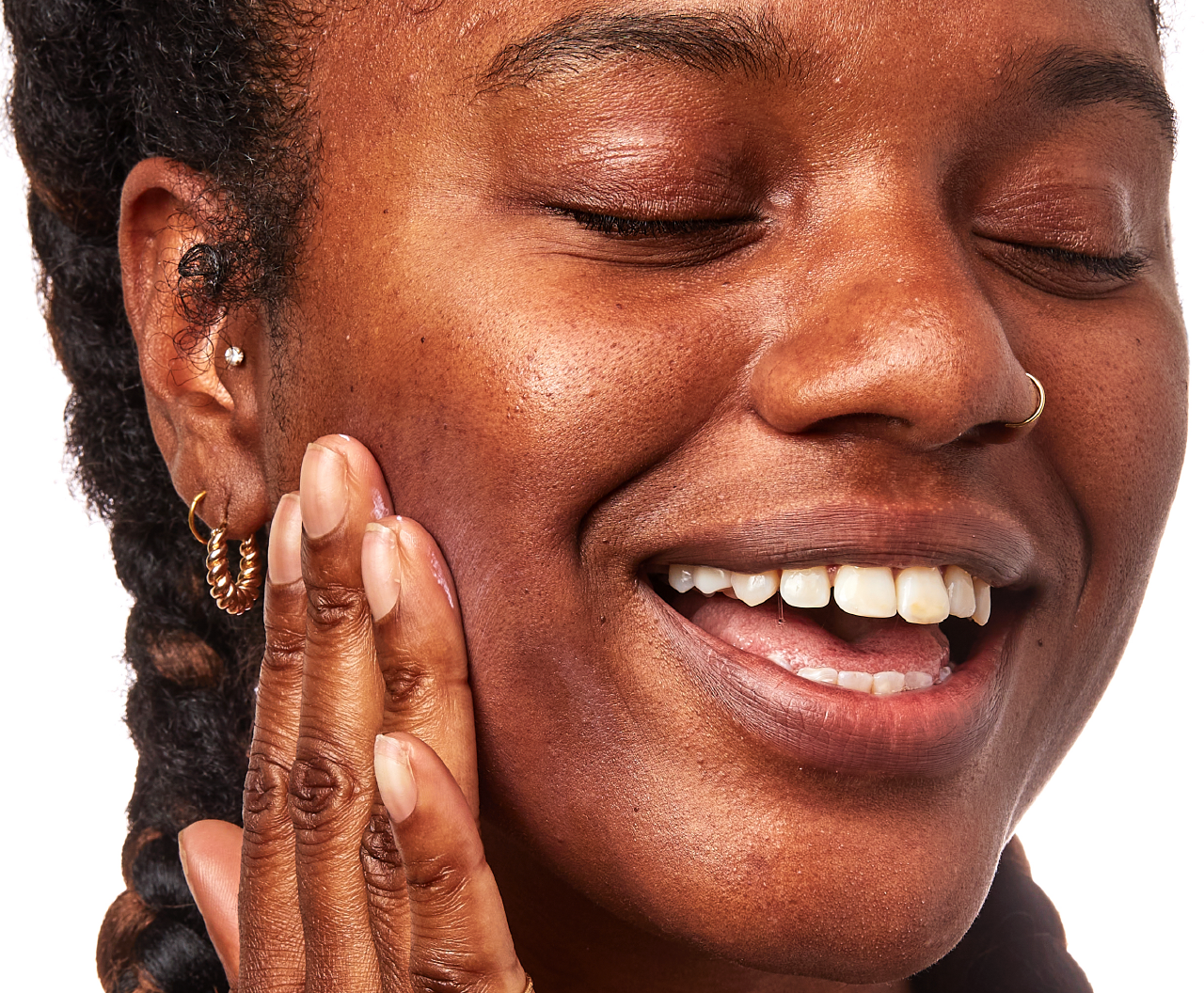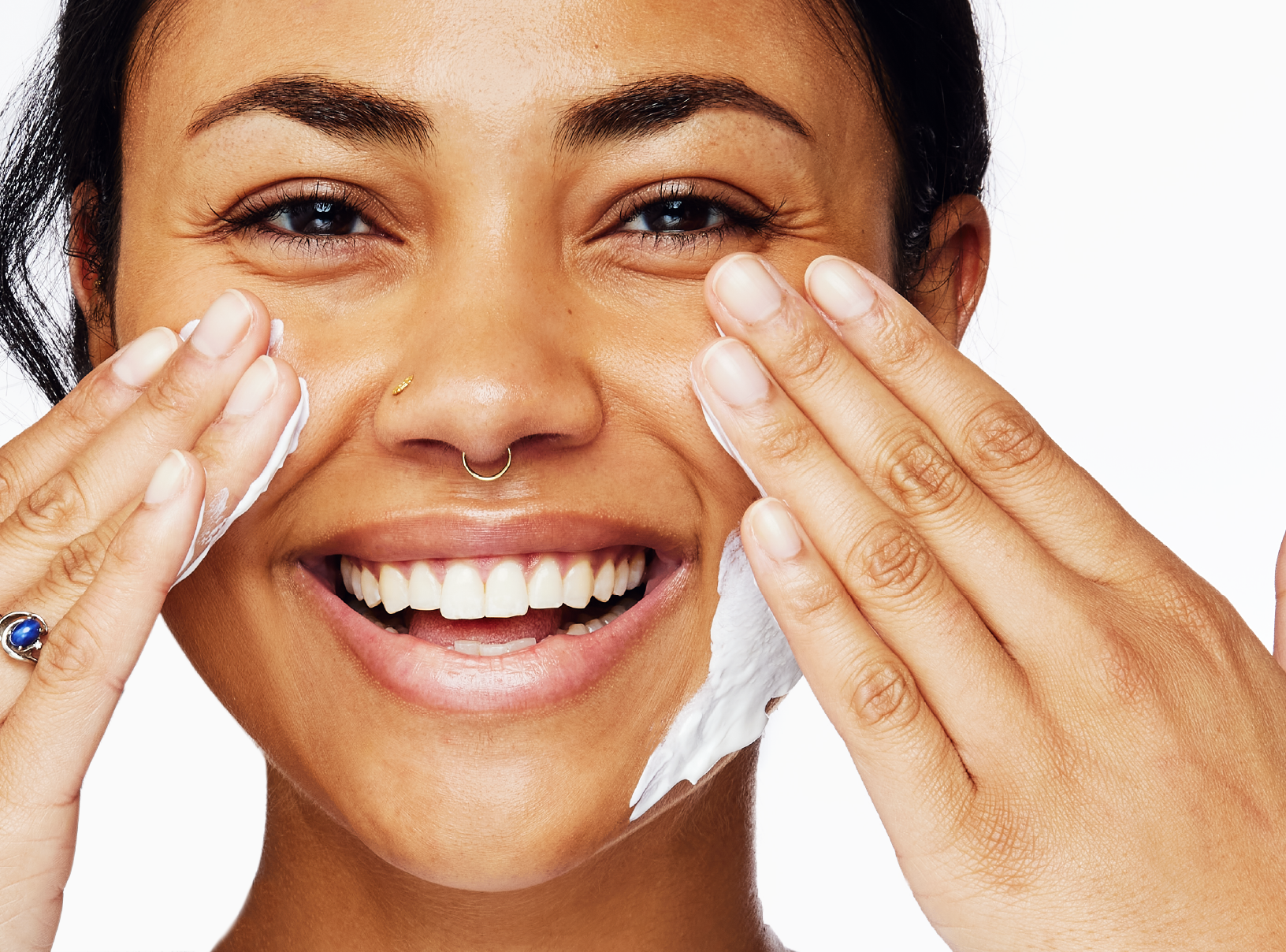Education
Combination skin care: treatment and tips


SHARE
Education
Combination skin care: treatment and tips
Medically reviewed by Kristin Hall, FNP
Written by Apostrophe Team
Last updated 4/1/2024
For those looking to keep their facial skin feeling and looking its best, there is a range of products available to control oil production or soothe dryness.
It's not as easy for combination skin types.
If you’ve got combination skin, a skin care routine becomes trickier. That’s because people with this skin type are oily in the T zone – or your forehead, nose, and chin -- and dry everywhere else.
Oily skin is typically shiny and greasy, while areas of dry skin can be flaky, itchy, or rough.
The good news: Once you get a handle on your skin type, where you have oil production, and where you have dry patches, you can identify a combination skin care routine that works for you. Here are some ways to do it.
What Are The Characteristics of Combination Skin?
People with combination skin, in addition to an oily T-zone, may experience enlarged pores in this area.
Oil and enlarged pores may be confined to a slim part of the T-zone, or may be visible outside it. Their cheeks may feel normal or dry.
Sebum overproduction is responsible for an oily T-zone. Conversely, less sebum and a lipid deficiency may be behind your drier areas.
Overproduction of sebum may cause acne. Acne occurs when hair follicles under the skin become clogged. This can happen when oil and dead skin cells clog the pores, which may result in lesions, or pimples and zits. They often occur on the face but can also appear on the back, chest, and shoulders.
Acne, for most, goes away by their thirties, although it can continue for other people into their forties and fifties.
Best Practices For Combination Skin Care
No matter your skin type, there are ways to take care of it so it stays healthy.
That includes wearing a broad-spectrum SPF 30 or higher sunscreen on both your face but also to all skin not covered by clothing.
You’ll want to reapply every two hours when outdoors or after swimming or sweating. Doing so can help prevent sunburn as well as wrinkles, age spots, and premature aging.
Avoid touching your face, since this habit can transfer dirt, germs, and oil from your hands to your face.
If you have combination skin and are also experiencing acne, there are ways to lessen your breakouts. These include:
Applying acne cream or medication in a thin layer over the area of the skin that’s acne-prone, instead of spot-treating individual pimples.
Using makeup, sunscreen, and skin and hair-care products that are labeled “non-comedogenic” or “won’t clog pores.”
Washing your face and removing makeup before bed each night.
Avoiding sharing makeup and makeup brushes.
Gently washing your face instead of scrubbing, which can irritate the skin, causing acne flare-ups.
Avoiding the urge to pop or squeeze your breakouts, which can cause scarring and increase inflammation.
What Is A Good Skincare Routine For Combination Skin?
It can be hard to take care of combination skin since some areas are experiencing excessive oil production while others have dry patches.
There are some general rules to follow to keep skin feeling and looking healthy.
To clean skin, you may opt for a gentle, non-irritating cleanser to get rid of dirt and makeup both in the morning and evening.
Next, a toner can be applied to help hydrate dry skin and minimize oil.
After that, it’s recommended you use a lightweight, derm-approved SPF.
During the day you might choose to use blotting papers to soak up excess oil in your T-zone.
Another option for keeping combination skin looking and feeling healthy includes gentle exfoliation to get rid of dead skin cells. You may try once a week and increase from there as long as your skin is tolerating it.
Using different masks for different areas of the face may also allow you to treat both oily and dry areas at the same time.
If acne is in the mix, there are medications available to help promote clearer skin. They need time to work, however. It’s a good idea to give them six to eight weeks before you see improvement.
Some people need three months. Then, once they are working, keep using the product to help prevent future outbreaks.
You can identify the main acne-fighting ingredient in your medication by looking at the ingredients:
Benzoyl peroxide: This decreases Cutibacterium acnes (C. acnes)
Retinoids: Unclog pores and resurface the skin
Salicylic acid: Reduces inflammation and unclogs pores
Get Healthy Looking and Feeling Skin For Good
Having combination skin can be frustrating since you’re trying to care for dry and oily skin and in some cases acne, at the same time.
By using products meant for combination skin and adopting habits to keep it healthy, it’s possible to manage oil production and dry patches at the same time.
7 Sources
Neill U. S. (2012). Skin care in the aging female: myths and truths. The Journal of clinical investigation, 122(2), 473–477. https://doi.org/10.1172/JCI61978
Skincare tips dermatologists use. (n.d.). American Academy of Dermatology Association. Retrieved July 19, 2021, from https://www.aad.org/public/everyday-care/skin-care-basics/care/skin-care-tips-dermatologists-use
Understanding skin – Skin types and conditions. (n.d.). Eucerin. Retrieved July 19, 2021, from https://int.eucerin.com/about-skin/basic-skin-knowledge/skin-types
Acne. (n.d.). National Institutes of Health. Retrieved July 19, 2021, from https://www.niams.nih.gov/health-topics/acne
10 skincare habits that can worsen acne. (n.d.). American Academy of Dermatology Association. Retrieved July 19, 2021, from https://www.aad.org/public/diseases/acne/skin-care/habits-stop
How to care for combination skin the right way. (2020, October 5). Skincare.com. Retrieved July 19, 2021, from https://www.skincare.com/article/combination-skin-treatment-tips
10 things to try when acne won't clear. (n.d.). American Academy of Dermatology Association. Retrieved July 19, 2021, from https://www.aad.org/public/diseases/acne/DIY/wont-clear
Like what you just read? Sign up for our email list to get the scoop on skincare science delivered straight to your inbox.

Education
What is milia?
What is milia? Today, we’re jumping into one type of bump that you may have heard about most commonly in infants — milia.
Read More
Education
Best moisturizer for acne-prone skin
If you have combination acne-prone skin, figuring out which moisturizer is best for your skin might be tough. In this guide, we break down the best moisturizer for combination, acne-prone skin.
Read More
Education
How to build a face care routine
As you get into skincare, it might seem overwhelming, especially trying to figure out the order you're supposed to apply products in. Below, we detail how to build a face care routine for your skin!
Read More
